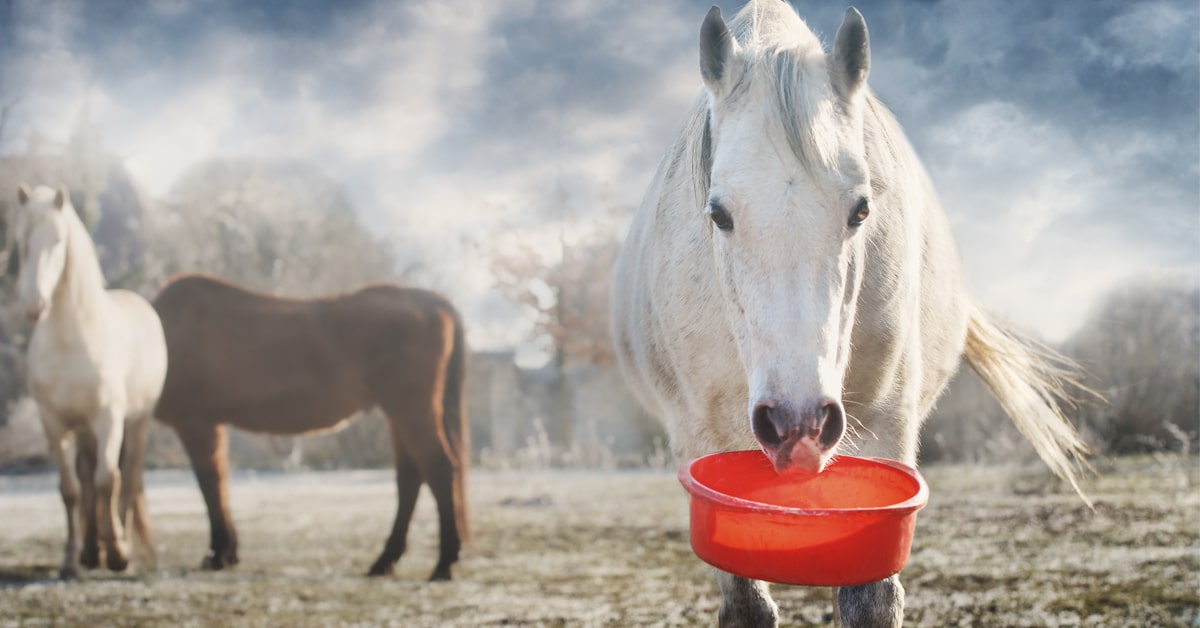Nutritional research is pretty amazing. We are always learning about new ingredients, feed processing methods or novel feeding management strategies – all to improve the health of our horses.
While we are always eager to hear about a new supplement that might work wonders for our horses, sometimes research actually disproves the usefulness of an ingredient, supplement or feeding practice.
Case in point: For many years, it was thought that by feeding horses extra iron we would be able to increase the horse’s performance and “energy” levels (as in “oomph”, not calories). The premise was that additional dietary iron would increase the amount of heme, an iron-containing protein, in blood. Heme functions to transport oxygen throughout the body, and if there was more oxygen available at the muscles, then perhaps a horse would be able to perform better. Many owners and trainers would even inject iron directly into their horses!
Research has shown that, in fact, iron supplementation does not improve blood parameters, such as red blood cell counts. Further, most equine diets naturally contain plenty of iron and supplementation with additional dietary iron is really only warranted for some horses, such as those with chronic ulcers that might be losing blood, or those with diagnosed anemia. In fact, a Canadian product, Mega Blud (with 100 mg iron per serving, about ¼ of the daily requirements), was recently discontinued, although its reasons for this are unknown. Red Cell is also very high in iron (300 mg per serving) and still has a huge following, however, likely for its benefits as a general vitamin-mineral supplement.
Another “fad” for horses was the premise of “no-carb” or very low-carb diets. This trend towards low/no-carb diets was really due to research suggesting that some horses do not metabolize glucose properly, either due to insulin resistance (more correctly referred to as “insulin dysregulation” which also includes states of hyperinsulinemia/high blood insulin and/or hyperglycemia/high blood glucose), or due to glycogen storage diseases such as polysaccharide storage myopathies. These horses do benefit from lower starch and sugar diets – or those that are low in non-structural carbohydrates.
However, it would be nearly impossible – not to mention dangerous – to create a ”low-carb” diet for horses, because fiber is a type of carbohydrate which is essential to keep the horse’s microbial population stable to ward off digestive upset. A low-carb diet that is also low in fiber would likely cause colic. It should also be pointed out that some horses need those non-structural carbohydrates like starch and sugar so they can synthesize muscle glycogen that is required for higher intensities of exercise.
Creatine is also an interesting fad that is still very popular in the human nutrition world. At the start of a high-energy work effort (like weightlifting, or perhaps at the start of a race), the body uses residual stores of ATP (adenosine triphosphate) to provide the energy for muscular contraction and relaxation and produces adenosine diphosphate (ADP) as a byproduct. The metabolism of other fuel sources such as fats or carbohydrates will kick in to help replenish ATP, but that often takes a few seconds to several minutes to get up and running. In the meantime, during this initial high-intensity work effort, creatine phosphate can donate its high energy phosphate to ADP to quickly recreate ATP for the muscle.
In humans, creatine supplementation can be helpful for some, in particular weightlifters and also vegetarians (as meat is the main dietary source of creatine). Of course, it would potentially be helpful if horses were able to increase their muscle creatine stores, although it has been shown that horses have poor absorption of creatine, and any amounts that would need to be fed to horses to compensate for low bioavailability would be cost-prohibitive.
Bran mashes used to be something that all horses would get on Sunday evenings, particularly after a heavy week of showing. In fact, many trainers still offer them to their horses. The initial idea with a bran mash would be to contribute towards a laxative effect, helping out with a horse’s digestive movement. It has also been disproven that bran has any kind of laxative effect (one that increases the water content of the feces), and in fact feeding too much bran can potentially disrupt the horse’s ideal dietary calcium-to-phosphorus ratio, as most brans are very high in phosphorus and low in calcium.
While bran mashes likely still make an owner happy and are a tasty treat for horses, they really are not needed. To that end, feeding a “new” ingredient periodically can actually be more disruptive to the horse’s microbial ecosystem. If you’re looking for a soupy treat for your horses, or to mix in some extra electrolytes after a long weekend of showing, you might be better off with some soaked hay cubes that are more similar to what your horse already eats regularly.
Another fad that has come – and hopefully gone – is hair testing for mineral and/or nutritional status. Too many horse owners have been duped into spending money on hair analyses and then buying the supplements that these companies then recommend. In fact, only heavy minerals such as lead, cadmium, arsenic or perhaps selenium really tend to accumulate in the hair, and they also only show a history of mineral intake, not current intake. Research has shown that hair mineral analysis is not related to blood mineral status or dietary intake of required minerals, and really only reflects heavy metal contamination.
There is always new information regarding equine nutrition and it is important for horse owners to learn to weed through the Facebook groups and potentially sketchy internet search results and seek out current recommendations on nutritional information and feeding practices. In general, equine nutritionists with graduate degrees (like a Masters or PhD in equine nutrition) are very good at staying up-to-date on the latest research, and using this information to help owners balance their horse’s diets for long-term health and performance.

